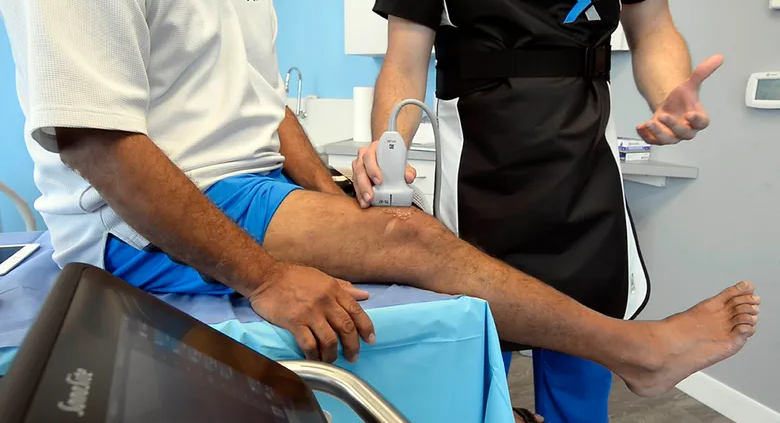Why Stem Cell Therapy Is Helping Athletes Recuperate More Quickly?
For athletes, recovery time is everything. Whether competing at a professional level or staying active in recreational sports, injuries can derail progress, affect performance, and even end careers. Conventional therapies like physical therapy, surgery, or rest can be beneficial, but they sometimes involve lengthy absences from training. Stem cell therapy has become a revolutionary option in recent years, giving athletes the opportunity to recuperate more swiftly and naturally. Athletes interested in exploring regenerative options for faster recovery can find more information at https://stemcellpowernow.com/stem-cell-therapy-for-sports-injuries/. But what makes this treatment so appealing, and why are more athletes turning to it?
The Demands Of Sports On The Body
Sports place extraordinary demands on muscles, tendons, ligaments, and joints. High-intensity training, repetitive movements, and the physical toll of competition increase the risk of injuries. Common sports-related injuries include:
- Torn ligaments, such as ACL or MCL injuries.
- Rotator cuff tears.
- Meniscus or cartilage damage.
- Chronic tendonitis.
- Muscle strains.
While these injuries are often treatable, the recovery process can take weeks or months, sometimes requiring invasive surgery. For athletes, this downtime can be career-defining.
What Is The Therapy Of Stem Cells?
One type of regenerative medicine that uses the body’s innate healing capacity is stem cell therapy. What distinguishes stem cells is their capacity to differentiate into multiple specialized cell types, including bone, muscle, and cartilage. In sports medicine, the athlete’s own bone marrow or adipose tissue is typically used to extract stem cells, which are subsequently processed and injected into the wounded area.
Once delivered to the site of injury, these cells reduce inflammation, stimulate repair, and promote the growth of healthy tissue. Instead of just managing pain or replacing damaged tissue, stem cell therapy works to restore function at the cellular level.
Why Athletes Prefer Stem Cell Therapy?
The appeal of stem cell therapy for athletes lies in its potential to speed up recovery while avoiding the drawbacks of surgery. Key benefits include:
- Faster Return To Play: Many athletes report quicker recovery times compared to traditional treatments.
- Minimally Invasive: The procedure involves injections rather than major incisions, reducing risks and downtime.
- Reduced Reliance On Pain Medication: Stem cells target the source of the problem rather than just masking symptoms.
- Natural Healing: Since the therapy uses the patient’s own cells, rejection or complications are rare.
- Potential Long-Term Benefits: By repairing tissue instead of removing it, stem cells may extend the lifespan of an athlete’s career.
For athletes, the opportunity to heal faster and return to training safely is invaluable.
Real-World Applications In Sports Medicine
Stem cell therapy has been used by professional athletes across multiple sports, including football, basketball, and tennis. High-profile cases have brought attention to regenerative medicine, sparking interest among both elite and everyday athletes.
In practice, stem cell therapy is used to treat:
- Knee injuries, such as meniscus or cartilage damage.
- Shoulder injuries, including rotator cuff tears.
- Chronic Achilles tendonitis.
- Elbow injuries such as “tennis elbow” or “pitcher’s elbow”
While outcomes vary, many athletes report significant improvements in pain, mobility, and performance after treatment.
The Future Of Recovery In Sports
As research continues, the role of stem cells in sports medicine is expected to expand. Clinical trials are exploring new applications and refining techniques to improve outcomes. For athletes, this means even greater opportunities for safe and effective recovery in the years ahead.
Regenerative medicine is not just changing how injuries are treated—it is reshaping how athletes think about their bodies and careers. By prioritizing healing over replacement, stem cell therapy offers a more sustainable path to long-term performance.
Final Thoughts
Athletes face unique pressures when it comes to recovery, and every day spent off the field matters. With the promise of long-term healing and quicker recovery times than surgery, stem cell treatment offers a possible substitute. While it is not without limitations, its growing popularity among athletes highlights a shift toward more natural, regenerative solutions.
For athletes at every level, stem cell therapy may represent not just a treatment, but a chance to return to the game stronger, healthier, and sooner than ever before.




Leave a Reply
Want to join the discussion?Feel free to contribute!